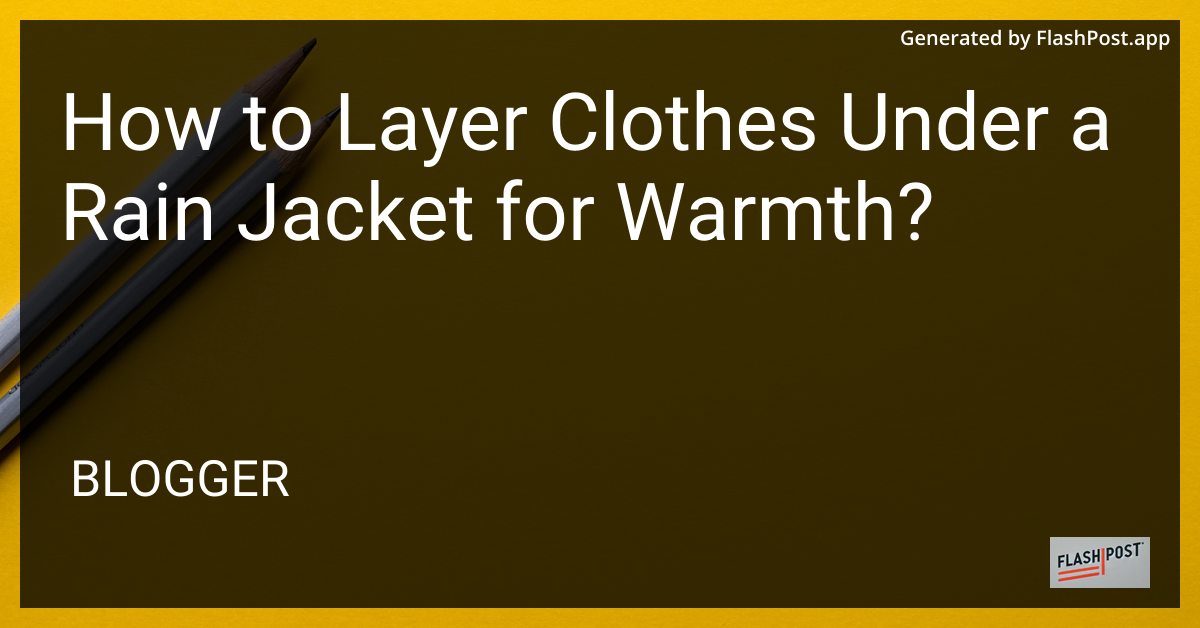How to Layer Clothes Under a Rain Jacket for Warmth?

How to Layer Clothes Under a Rain Jacket for Warmth
When the weather turns wet and chilly, layering clothes under a rain jacket is essential for staying warm and dry. Whether you’re navigating a drizzly urban landscape or trekking through the mountains, understanding how to layer effectively can make all the difference in comfort and performance. In this guide, we’ll explore the best ways to layer clothes under a rain jacket to ensure you’re warm and prepared for any weather conditions.
1. The Base Layer: Moisture Management
The first step in layering is to start with a good base layer. This layer should be made of moisture-wicking materials like merino wool or synthetic fibers. The base layer’s primary function is to keep sweat away from your skin, ensuring you stay dry and comfortable even in wet conditions.
Recommendations
- Merino Wool: Known for its natural moisture-wicking properties and ability to regulate temperature.
- Synthetic Fabrics: Often more affordable, these materials are designed to move sweat away from the skin.
2. The Insulation Layer: Retaining Warmth
Once your base layer is set, it’s time to add an insulating layer. This layer is crucial for retaining body heat. Options include fleece jackets, down vests, or synthetic puffers. Choose your insulation based on the expected temperature and your activity level.
Recommendations
- Fleece Jackets: Lightweight and breathable, great for moderate cold.
- Down Vests: Offers excellent warmth-to-weight ratio for colder conditions.
- Synthetic Puffers: Ideal for wet conditions, as they retain insulation properties even when damp.
3. The Outer Shell: Rain Jacket
Your next layer is the rain jacket itself. A high-quality rain jacket will offer waterproofing and breathability, preventing rain from soaking your layers while allowing moisture from sweat to escape. This layer should have a snug fit to effectively protect against the elements.
Considerations
- Ensure the jacket has sealed seams to prevent water from sneaking through.
- Look for features like adjustable hoods and cuffs for extra protection.
4. Adding Extras for Extreme Cold
If temperatures are extremely low, consider adding extras like a heated jacket for additional warmth. Heated jackets for women have gained popularity for their ability to provide consistent warmth without bulk.
5. Final Touches: Accessorize
Don’t forget about the finer details. Accessories like waterproof gloves, thermal socks, and beanies can significantly enhance your overall warmth. Additionally, you may want to consider specialized jackets for specific activities such as team gymnastics jackets wholesale or best curling jackets.
By following these steps, you’ll be well-prepared to face rainy and cold conditions with confidence. Remember, proper layering is about balancing warmth, comfort, and protection, allowing you to enjoy the great outdoors without compromise.
Comments
Post a Comment